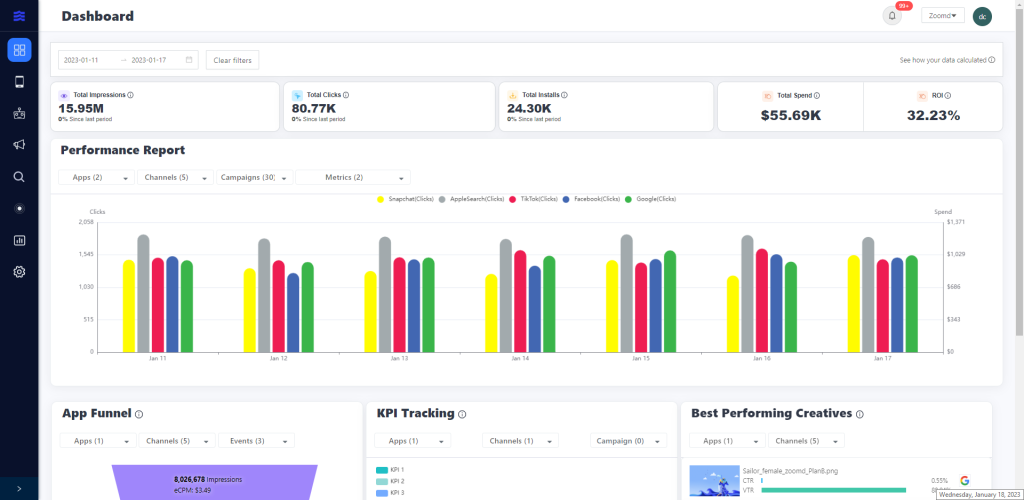With ad creative optimization subject to user biases, like preferences for bold headlines, images, and colors, etc., Zoomd-owned Albert AI technology enables true creative optimization driven by real-time creative performance across products, ads, campaigns, and market segments.
VANCOUVER, British Columbia, Jan. 26, 2023 /PRNewswire/ — One of the last areas of marketing to benefit from AI-driven optimization is ad creative.
The actual creation of ads will probably be the last area of marketing to benefit from AI-driven technology, even with the recent breakthrough of technologies like Chat GPT-4.
But the optimization of ad creative is very well-suited for AI technology today because of the subjectivity people apply when optimizing ads. While it’s easy to compare the performance of two distinctly different ads, optimizing creative performance to determine the optimal size and color of the font for the ad’s headline and other subjective creative elements is difficult for people because of our inherent biases.
“A creative director who has succeeded with bold headlines or has a preference for certain colors and color combinations will bring these biases to the ad creation and optimization process,” said Nir Huberman, VP Product at Albert AI, part of the Zoomd marketing and publisher platform. “But Albert is more methodical, breaking down each potential parameter that impacts performance, testing each one by one. That’s why Albert’s technology can improve creative performance by optimizing ad parameters from among the options provided which enables exceeding client KPIs. Albert also provides a lot of value for marketers by knowing when to refresh or replace an ad’s creative.”
And by determining which ad creative performed best using Albert, marketers are in a better position to create new ads that will perform.
An e-commerce company contracted to work with Albert AI with the stated KPI of increasing Return On Ad Spend (ROAS) by 500%, a KPI that Albert’s team believed was realistic. A few months after the conclusion of the onboarding process, Albert achieved an 800% improvement in ROAS. And in subsequent years, this e-commerce company, now in its fourth year working with Albert, is still achieving improvements in ROAS that are between 10-20%.
For this e-commerce company, Albert was able to optimize ad creative by creating the best-performing ads for each target segment and each ad platform/channel. Albert’s technology creates the optimal ad by selecting the best images, colors, fonts, and texts that will generate the most cost-effective performance for the target audience. Finally, Albert’s technology was able to efficiently determine when to refresh and then change ads to ensure optimal ROAS.
Albert is an advertiser and an agency’s autonomous marketing ally. The technology leverages AI to create ads that optimize campaign performance, from keyword, audience, platform, and device selection and bidding to creative optimization across search, social, display, and cross-channel. Albert assists marketers and agencies – from defining campaign strategies and messaging to the creation and optimization of ads across audience segments and platforms. By working 24/7 to continuously optimize campaign performance, Albert AI complements marketer and agency teams, giving them the insights to make them smarter as well as more efficient and effective.
About Zoomd
Zoomd (TSXV: ZOMD) (OTC: ZMDTF), founded in 2012 and began trading on the TSX Venture Exchange in September 2019, offers a site search engine to publishers, and a mobile app user-acquisition platform, integrated with a majority of global digital media, to advertisers. The platform unifies more than 600 media sources into one unified dashboard. Offering advertisers, a user acquisition control center for managing all new customer acquisition campaigns using a single platform. By unifying all these media sources onto a single platform, Zoomd saves advertisers significant resources that would otherwise be spent consolidating data sources, thereby maximizing data collection and data insights while minimizing the resources spent on the exercise. Further, Zoomd is a performance-based platform that allows advertisers to advertise to the relevant target audiences using a key performance indicator-algorithm that is focused on achieving the advertisers’ goals and targets.
